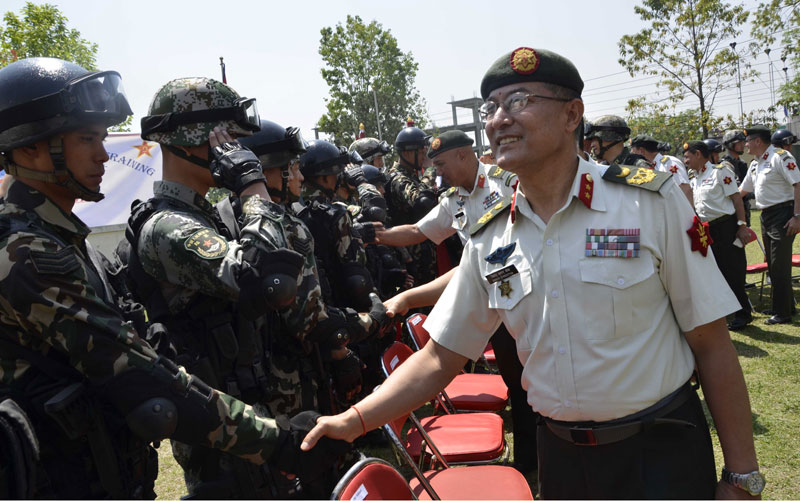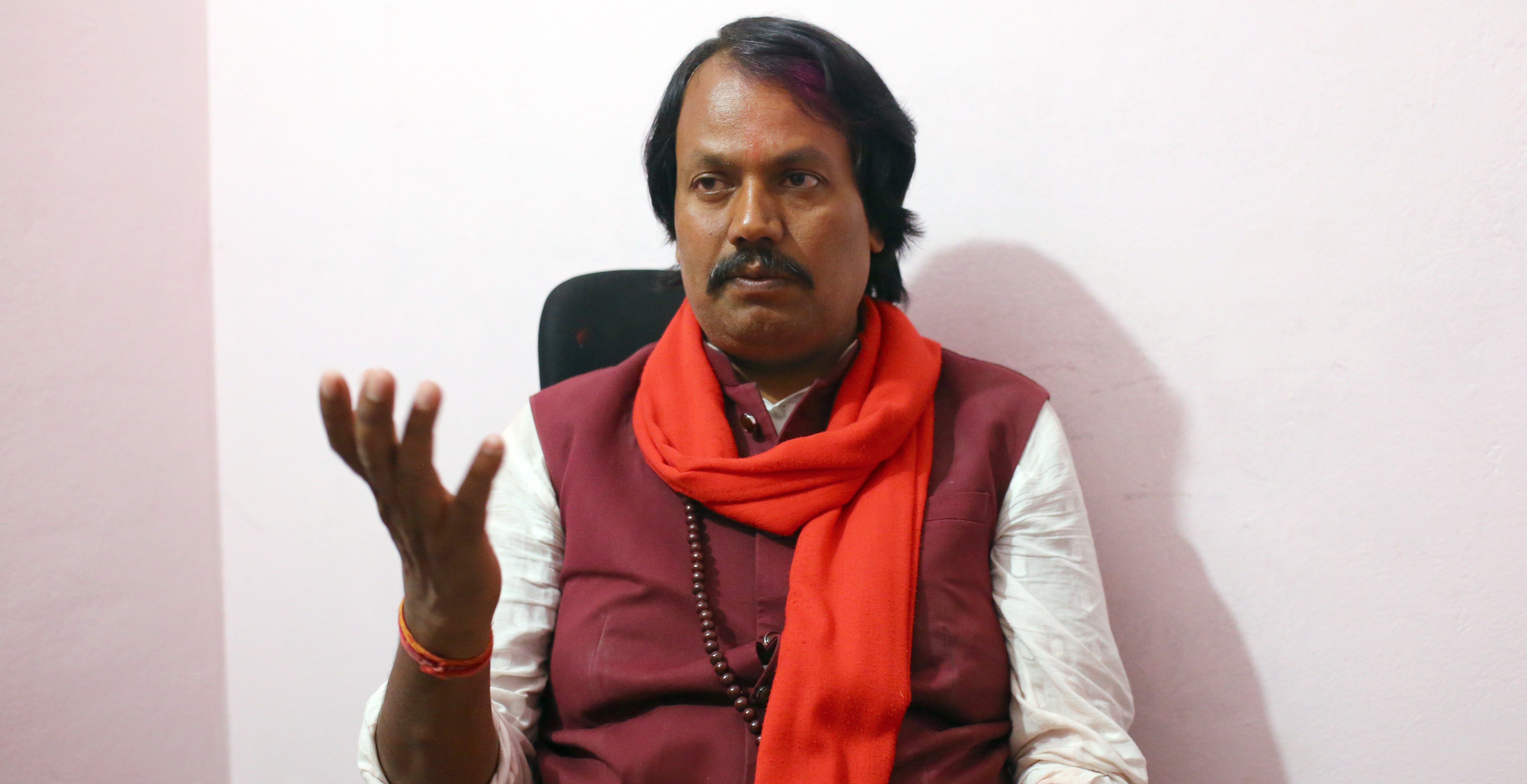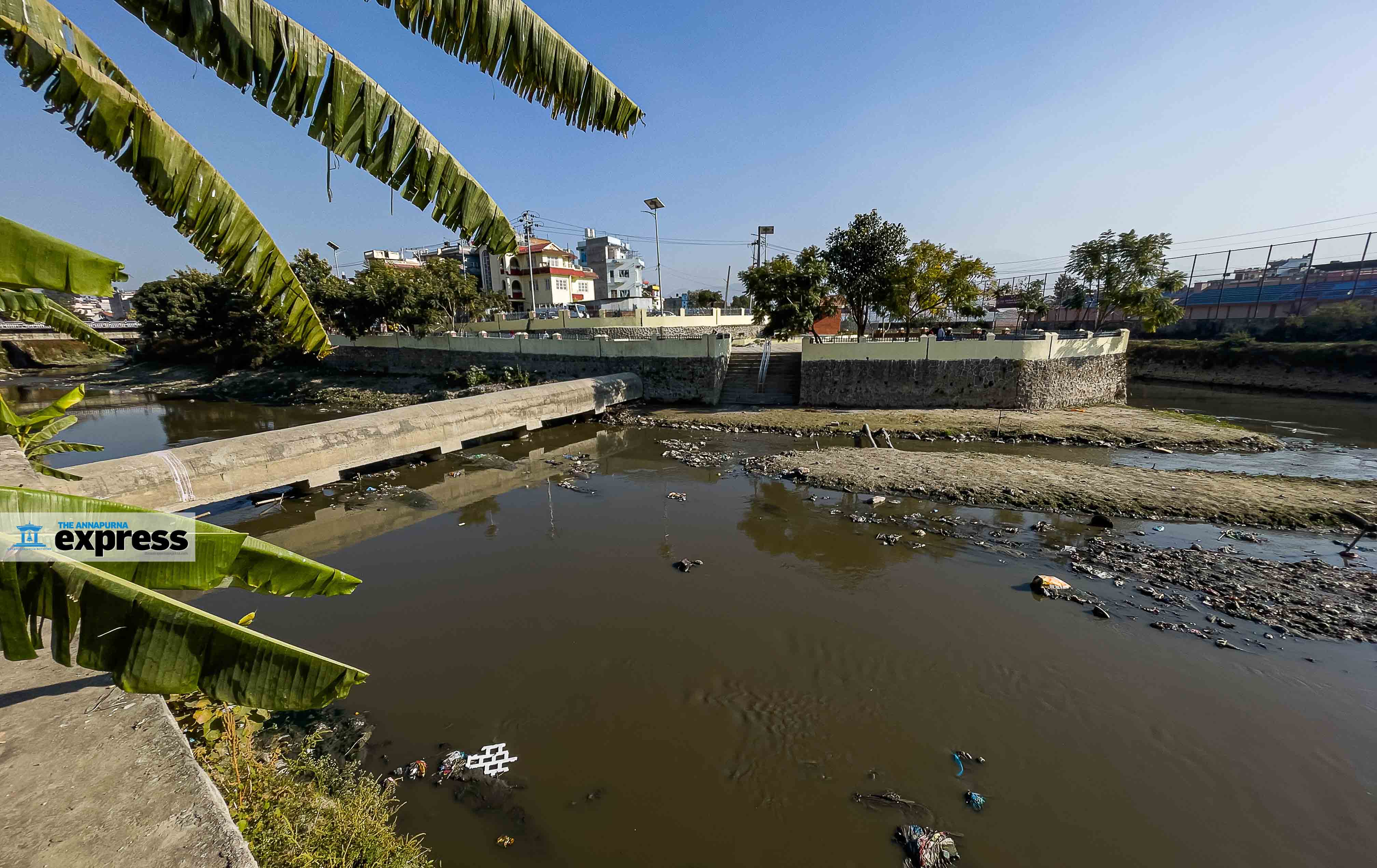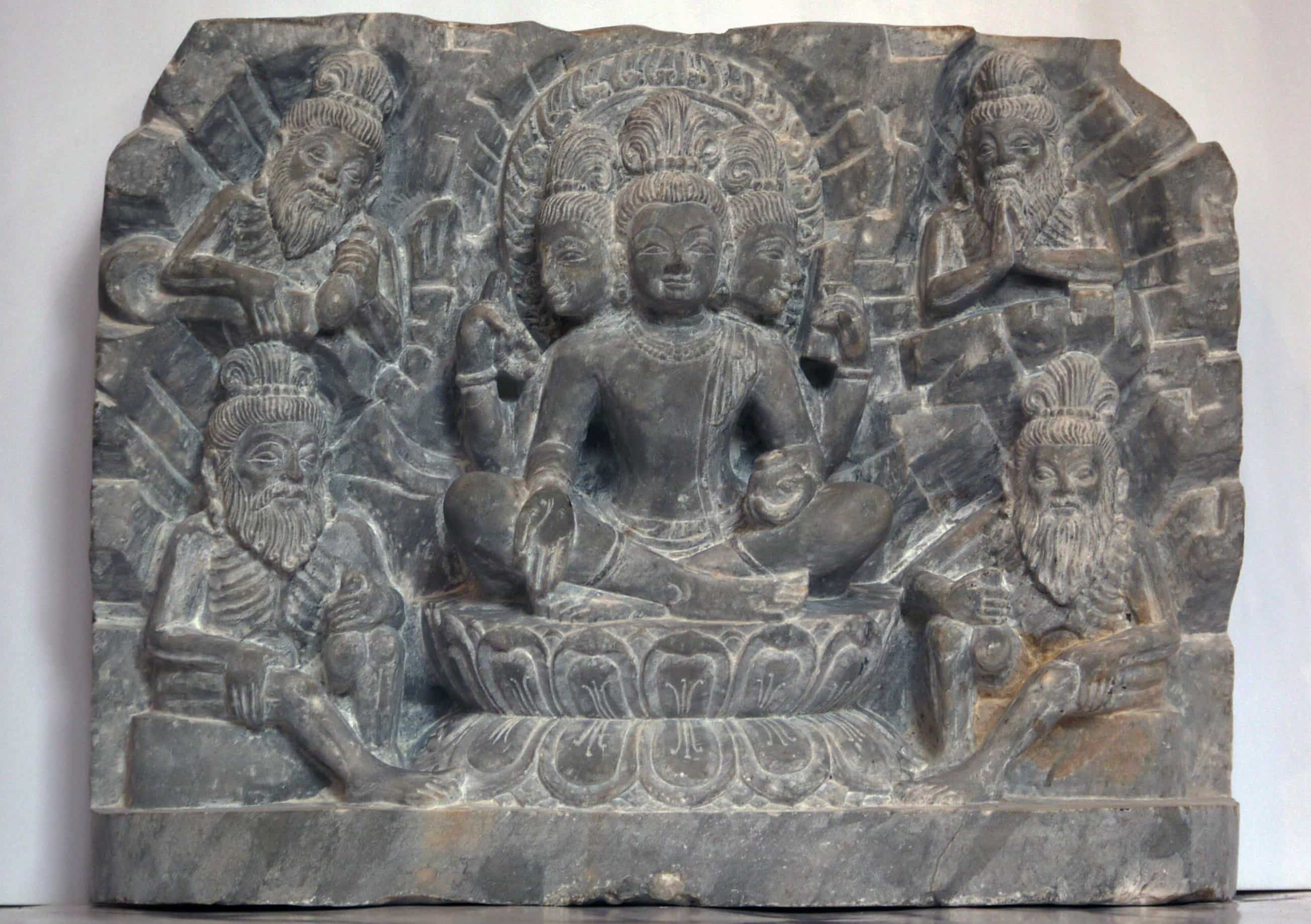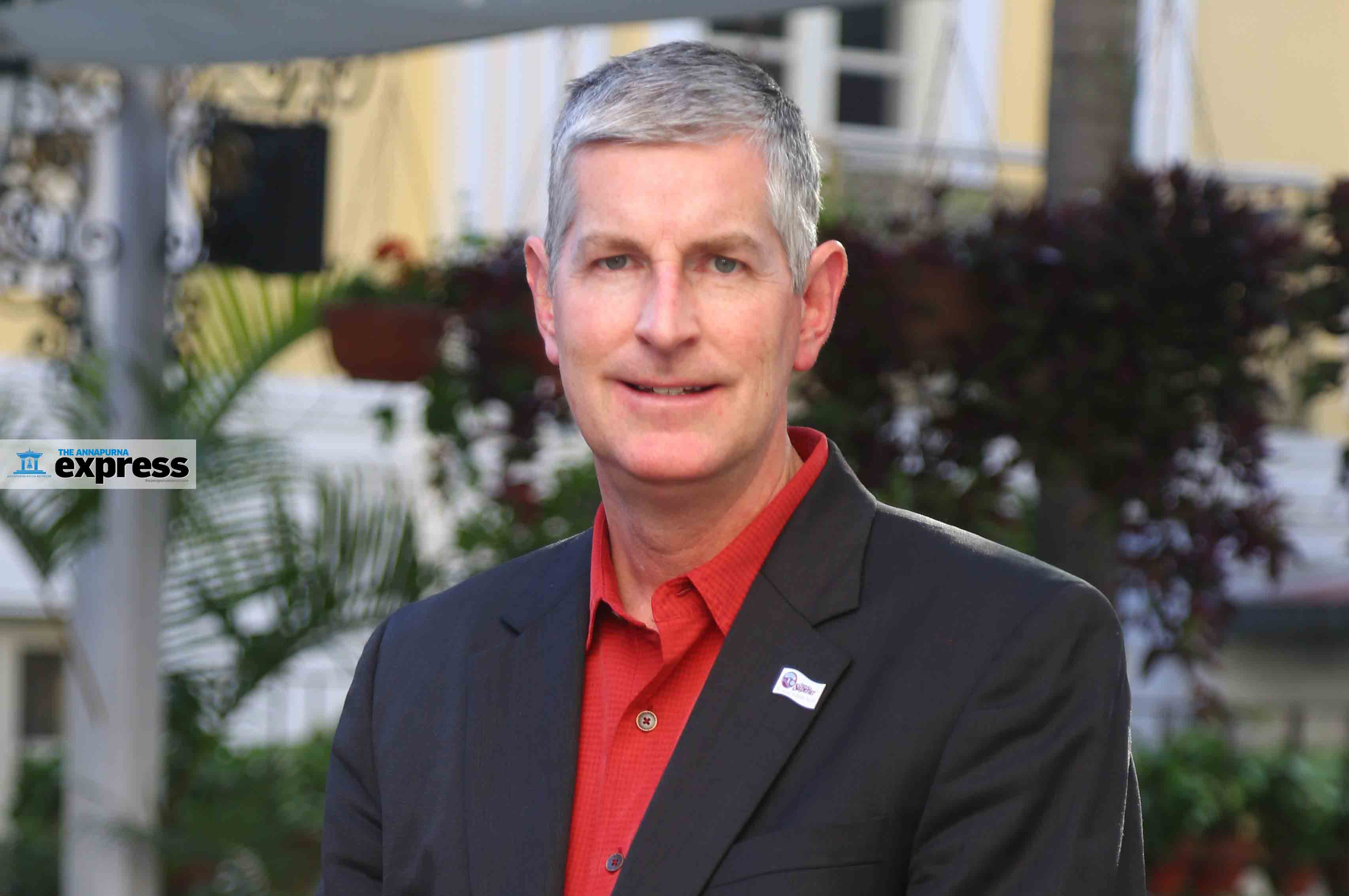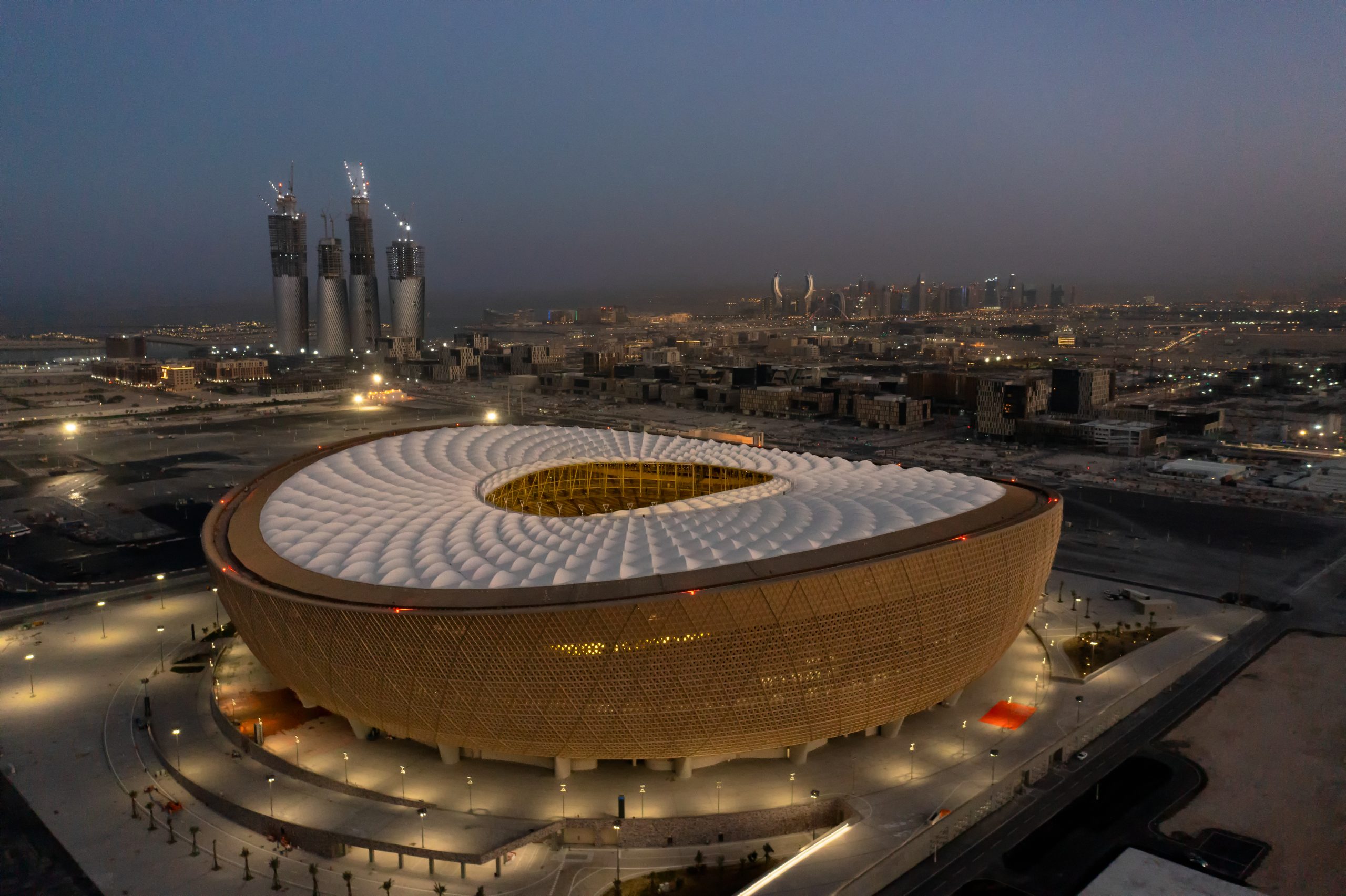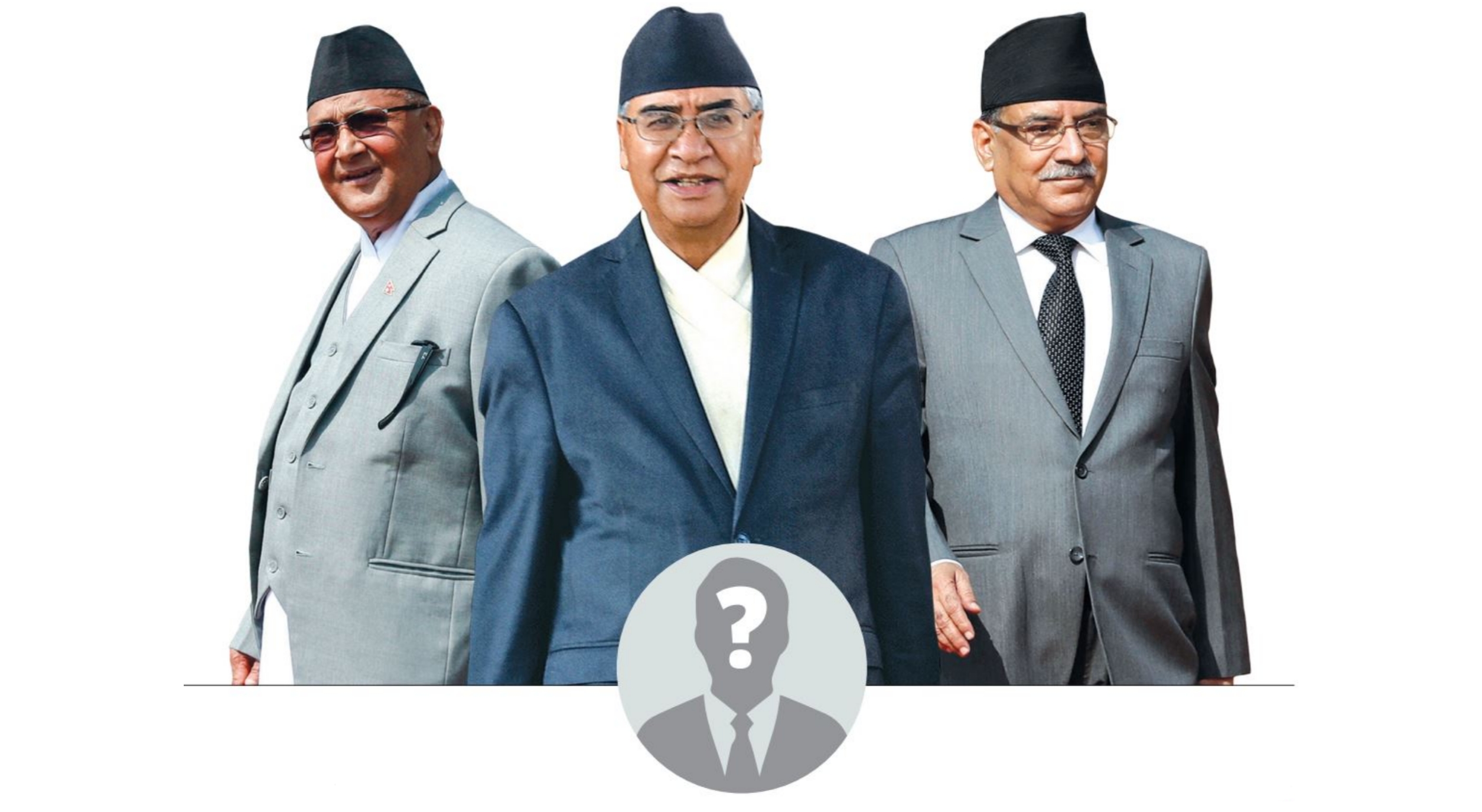Nepal, China to resume military drill
Nepal Army is making preparations to hold a military drill with the People's Liberation Army of China after a gap of two years. With China easing the covid restrictions, the two armies are finally set to hold the joint exercise, which they had been holding regularly since 2017.
According to NA spokesperson Narayan Silwal, the army has started the necessary homework for the joint drill.
“The date has not been decided yet, but we are eagerly waiting to start the joint exercise, which was stalled after 2020 due to China’s zero-covid policy. ” India and the US have already resumed joint military exercise with Nepal. In fact, a two-week long joint military exercise between the NA and the Indian Army is currently underway in Rupandehi.
Nepal and India have been holding military drills for the past 13 years. The military drill between the NA and US Army resumed from last year, and they have already held two joint exercises. While China maintains that its covid policy was the reason why the PLA did not conduct any military drills with the NA, security analyst Binoj Basnyat says the pandemic might not be the only reason.
“This is part of Beijing’s strategy. In the last two years, China may have been analyzing how things work with Indian, American and Nepali militaries.” Nepal is important for China in regards to its security strategy. “China was not going to pause the joint military drill with Nepal for long, since India and the US had already resumed theirs.”
CK Raut: We’ll side with the party that takes ownership of our demands
Janamat Party led by CK Raut became a national party after winning six seats in the federal parliament in the Nov 20 election. Raut, who forayed into politics as a radical outsider with his free-Madhes campaign, has tempered his hardline opinion over the years. Now his party has joined mainstream politics and is in the position where it could join the would-be coalition government. Pratik Ghimire of ApEx talks to Raut regarding his political journey and his party.
You boycotted the 2017 polls and now you are leading a national party in the federal parliament. How has the experience been so far?
We should accept natural changes. At some point, the Nepali Congress also boycotted the elections. The Maoists said that they do not accept the parliamentary system, and now they are in the parliament. This happens in politics. It was exciting to participate in the election for the first time. I am excited about how this opportunity will be, and how much success we will achieve. But I have always kept in mind that if we fail, the people will not trust us anymore, and we have to accept that. We have no excuse to be like other ordinary parties.
You started off as a free-Madhes campaigner, only to join mainstream politics to the surprise of many. Can we expect other surprises from you and your party?
People may be surprised because they think traditionally. I make important and quick decisions. I can go against what is going on in society and prevail for the better. I don't have big agendas and ambitions at least. I don’t even want to promise anything big. The reason we established this party is to advocate for common people and provide them employment. This country can be made better by creating job opportunities and controlling corruption. For these, I have made all the decisions. These are not surprises, but the need of the hour.
Is this the right time for your party to get involved in government or strengthen the party organization?
We are now a national party and with six MPs in the federal parliament, we are a decent political force. It is necessary to involve and engage the government to meet our demands. We will work to build the internal system of the party, and I'm sure that involvement in the government won’t hamper our party system.
The past governments have failed to honor the agreements reached in favor of Madhes. The people of Madhes don’t seem to be in favor of Madhes-based parties joining the government either. Do you think the government will address the demands of Madhes the agreements this time?
The governments so far have not been sincere in implementing the agreements. The agreements made by the previous governments with other parties have not been implemented. So, we have been in regular talks with all the parties. We will take the side of the party that is willing to take ownership of our agendas. And I don’t think Madhesi people don’t want us to be in the government. The downfall of other Madhes-based parties was caused due to the path they took for power and personal benefits. Janamat Party is different and it has a clean background.
How does Janamat Party distinguish itself from other Madhes-based parties?
Janamat Party is not a party that broke off from another party to gain power or opportunity. We have built this party from scratch. Janamat Party is run by the people who do not wish to earn a position of power or money. They joined politics to improve the standard of living of the people. It is a party of people who come from a struggling background.
500th week of Bagmati Cleaning Campaign (Photo Feature)
The Bagmati Cleaning Campaign, that kicked off on 19 May 2013, marks its 500th week this Saturday, Dec 10. The cleaning campaign that started from the Kathmandu Valley has now expanded across the country. 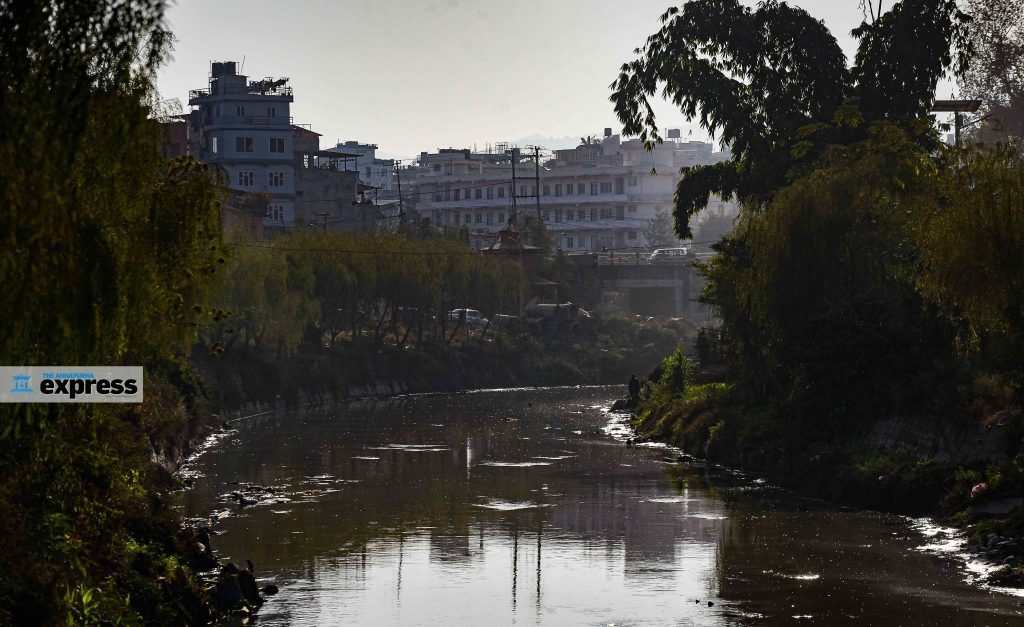 Since the beginning of the campaign, every Saturday, the team has been collecting around 1.5 metric tons of garbage from different stretches of the Bagmati river bank.
Since the beginning of the campaign, every Saturday, the team has been collecting around 1.5 metric tons of garbage from different stretches of the Bagmati river bank. 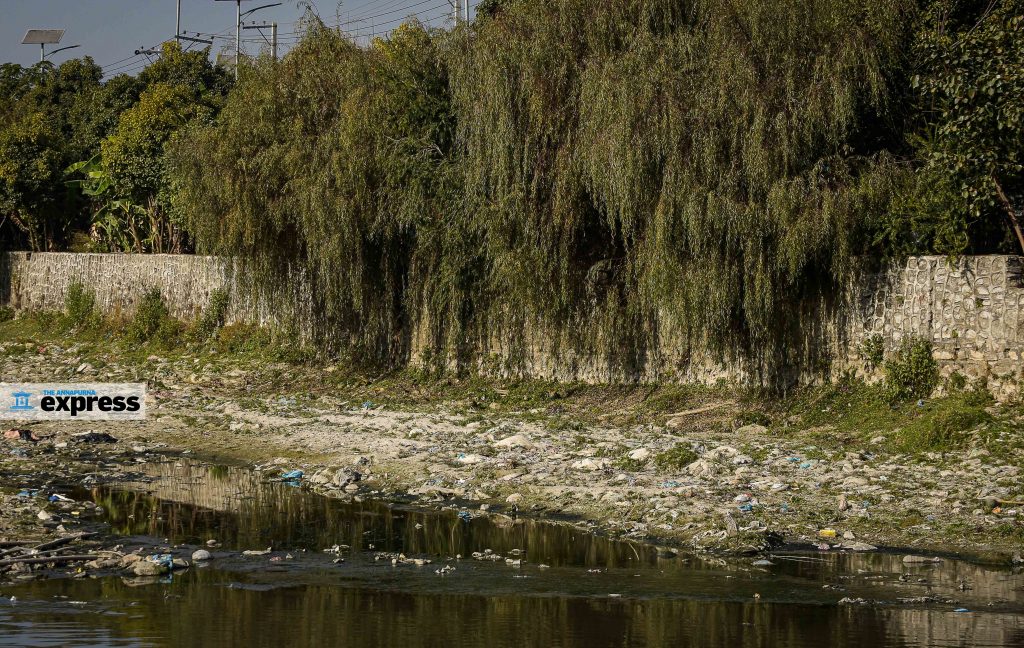 In its 100th week, 150,000 people formed a human chain. Similarly, in the 200th week, they had organized a formal program and requested schools and government offices to join the campaign. Not only that, the team requested all the local levels across the country to be involved in cleaning the rivers in their respective areas.
In its 100th week, 150,000 people formed a human chain. Similarly, in the 200th week, they had organized a formal program and requested schools and government offices to join the campaign. Not only that, the team requested all the local levels across the country to be involved in cleaning the rivers in their respective areas.  This time the campaigners haven’t planned any special program to mark the 500th week. Mala Kharel, one of the core team members of the project says, “Due to the recent conflict between Kathmandu Metropolitan City and the squatters living on the banks of Bagmati, we couldn’t plan a special program.” They will instead be planting trees and cleaning as usual.
This time the campaigners haven’t planned any special program to mark the 500th week. Mala Kharel, one of the core team members of the project says, “Due to the recent conflict between Kathmandu Metropolitan City and the squatters living on the banks of Bagmati, we couldn’t plan a special program.” They will instead be planting trees and cleaning as usual. 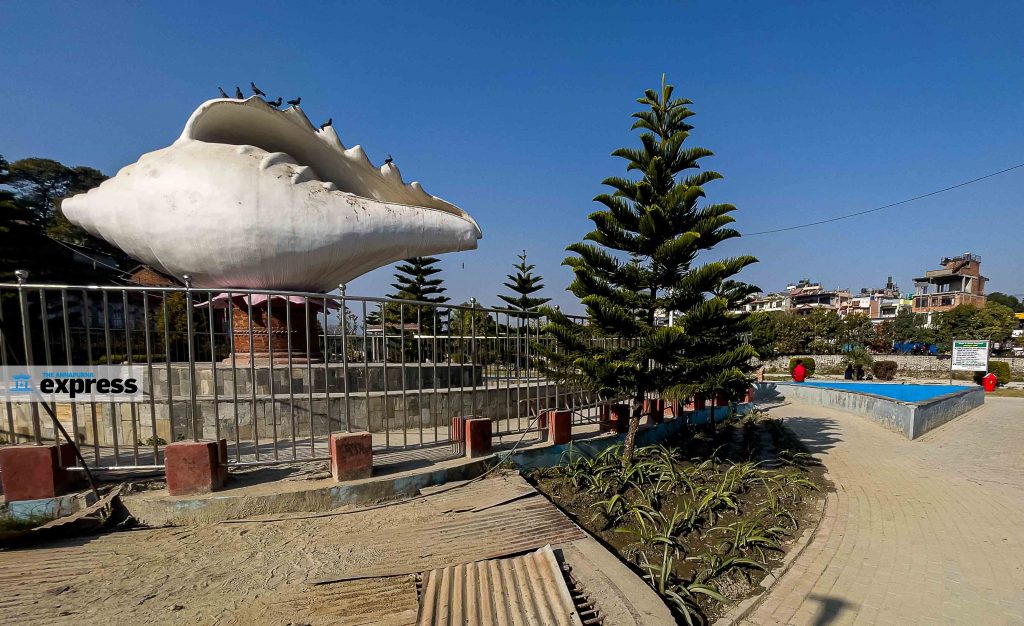 We have captured the two sides of the Bagmati river—the clean and dirty. Because of the campaign there are now a few gardens and parks along the banks. However, the river isn’t as clean as it could be. The campaigners say that unless the government makes plans to divert the sewage system elsewhere, and stops it from emptying into the rivers, no cleaning campaign will ever be enough.
We have captured the two sides of the Bagmati river—the clean and dirty. Because of the campaign there are now a few gardens and parks along the banks. However, the river isn’t as clean as it could be. The campaigners say that unless the government makes plans to divert the sewage system elsewhere, and stops it from emptying into the rivers, no cleaning campaign will ever be enough. 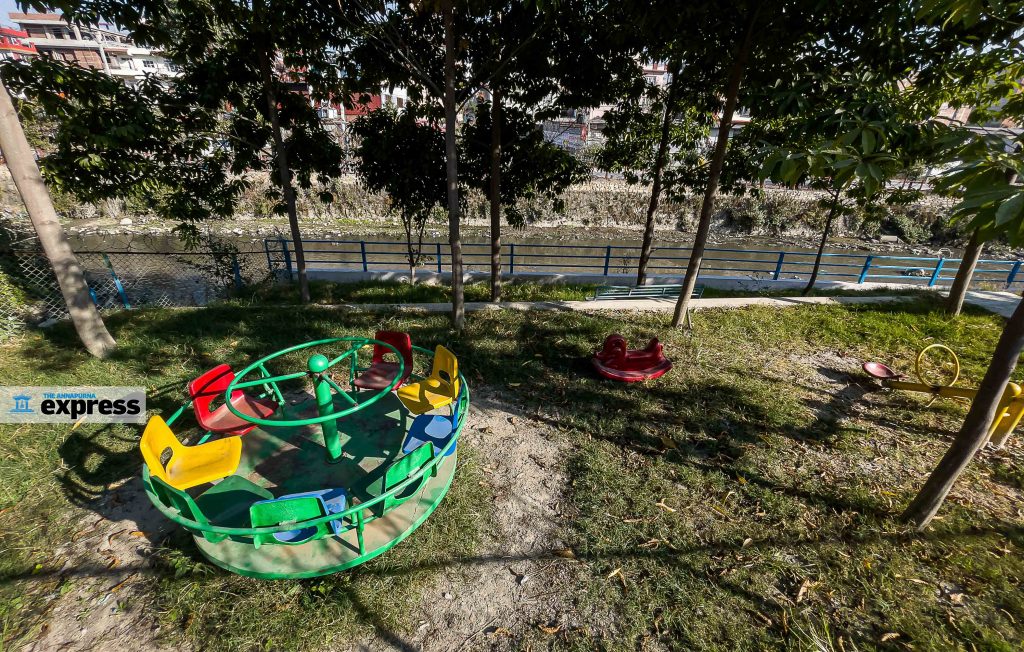
Replicas of Nepali stolen statues (Photo Feature)
In Aug 2022, the Metropolitan Museum of Art (Met) in New York, US, returned two archeological artifacts to Nepal: a 10th-century stone statue and a 13th-century wooden strut. These artifacts had arrived at the Met in the 90s. 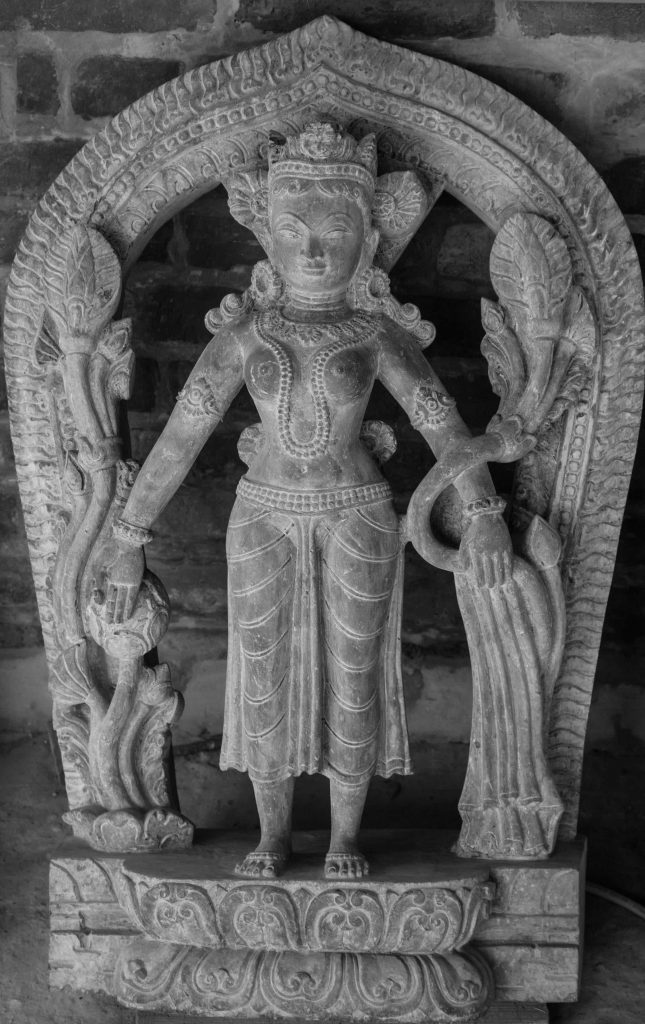
The statue of Mahagauri of the 13th century was stolen in 1970 from Deopatan.
This is just one incident of lost and stolen historical, cultural and archeological heirlooms cropping up in personal and museum collections in different parts of the world. Rabindra Puri, Nepali conservationist, and his team are doing their best to return such pieces of Nepali art, history and culture.
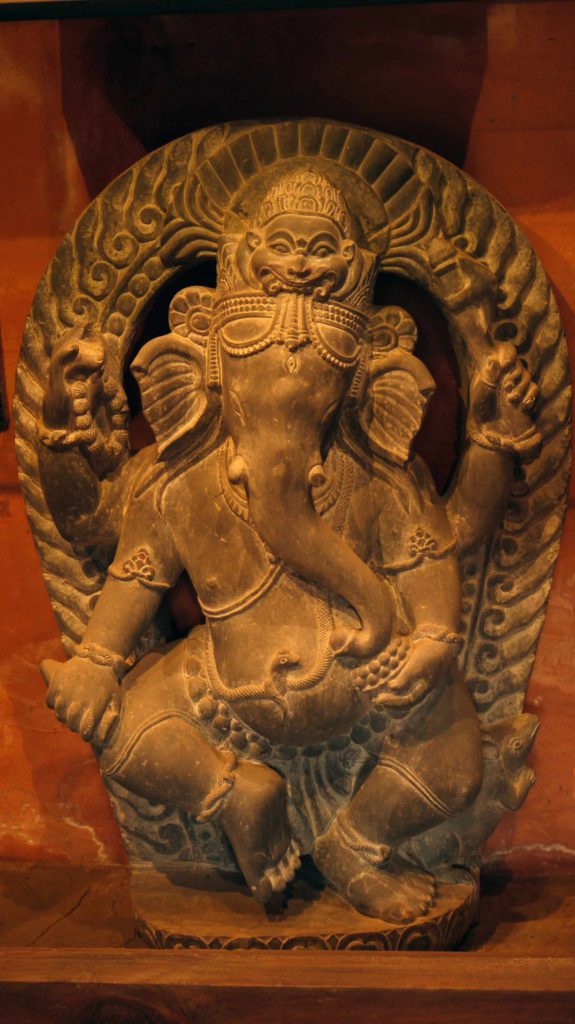
The statue of Dancing Ganesh of the 15th century was stolen in mid 1985 from Sanga.
Puri has started the project called ‘The Museum of Stolen Art’, which aims to preserve traditional arts, artifacts and monuments of Nepal by raising awareness about lost and stolen artifacts. 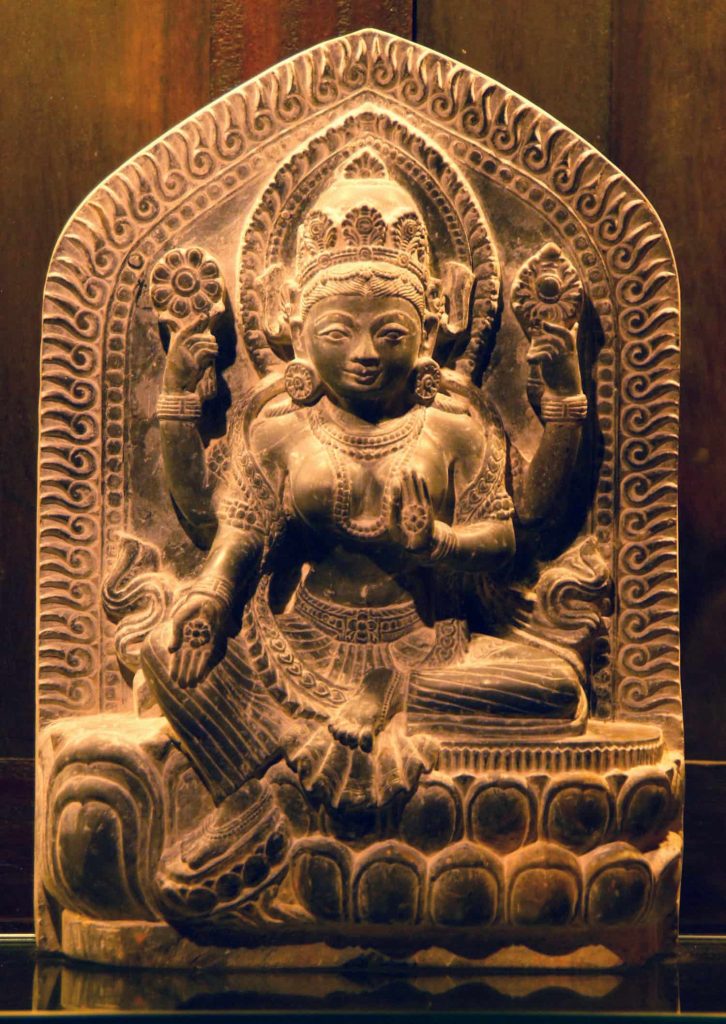
The statue of Female Divinity of the 18th century was stolen in early 1980 from Patan.
“As an initial step, we planned to display the replicas of 50 lost and stone sculptures. To date, we have already made 40 replicas,” he says.
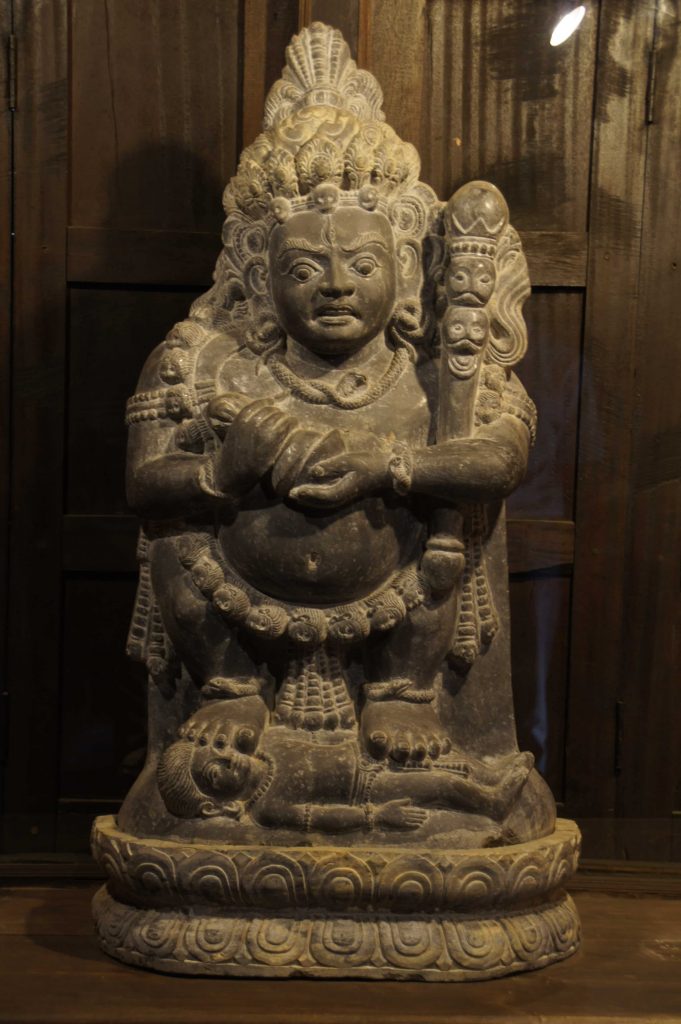
The statue of Mahankal of the 17th century was stolen in 2009 from Inchotol, Bhaktapur.
These replicas are displayed at The Heritage Gallery in Toni Hagen House, Bhaktapur. These deities are not for sale, and will be taken to the Museum of Stolen Art in Panauti, Kavre, once the building is completed.
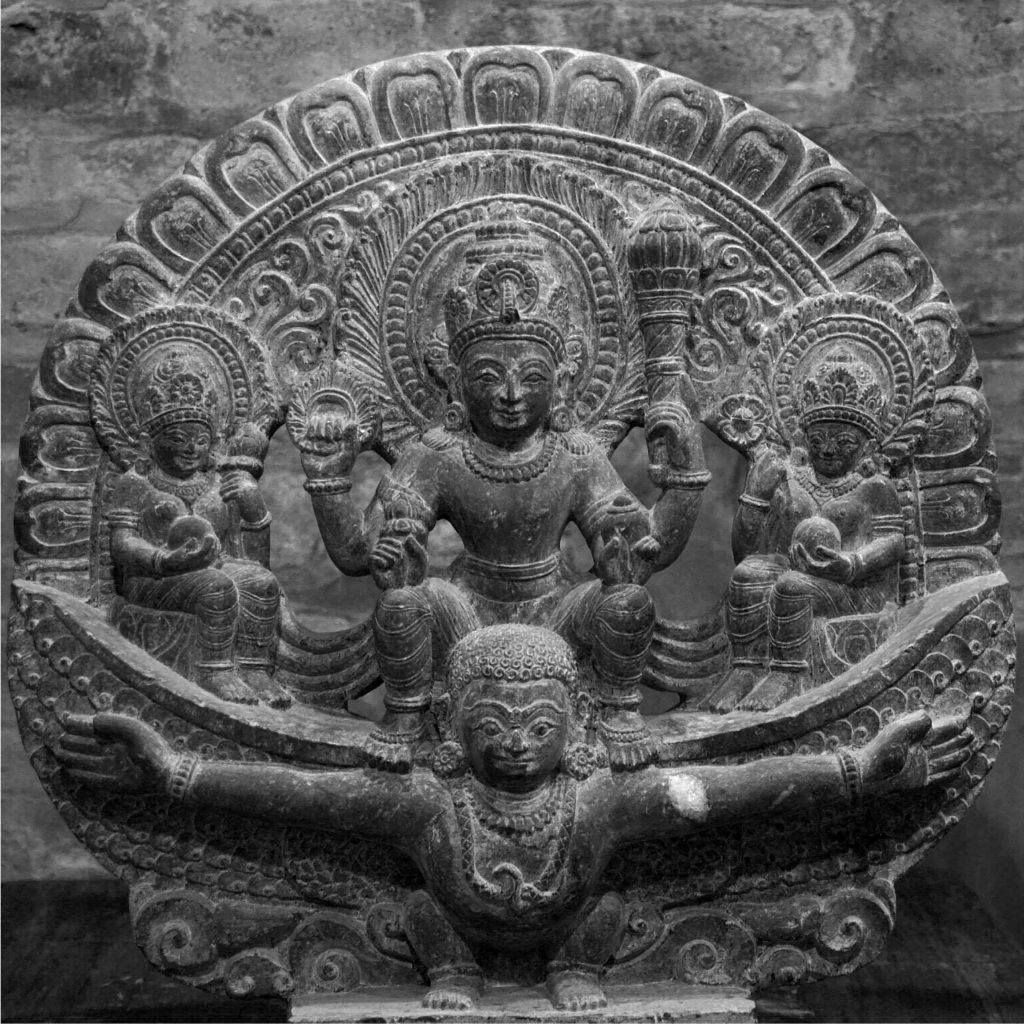 The statue of Garudasana Vishnu of the 10th century was stolen in late 1970 from Hyumat Tol, Kathmandu.
The statue of Garudasana Vishnu of the 10th century was stolen in late 1970 from Hyumat Tol, Kathmandu.
All of these facsimiles were crafted under the leadership of a renowned stone artist Timir Nashan Ojha and his team of 11 Nepali and Indian sculptors.
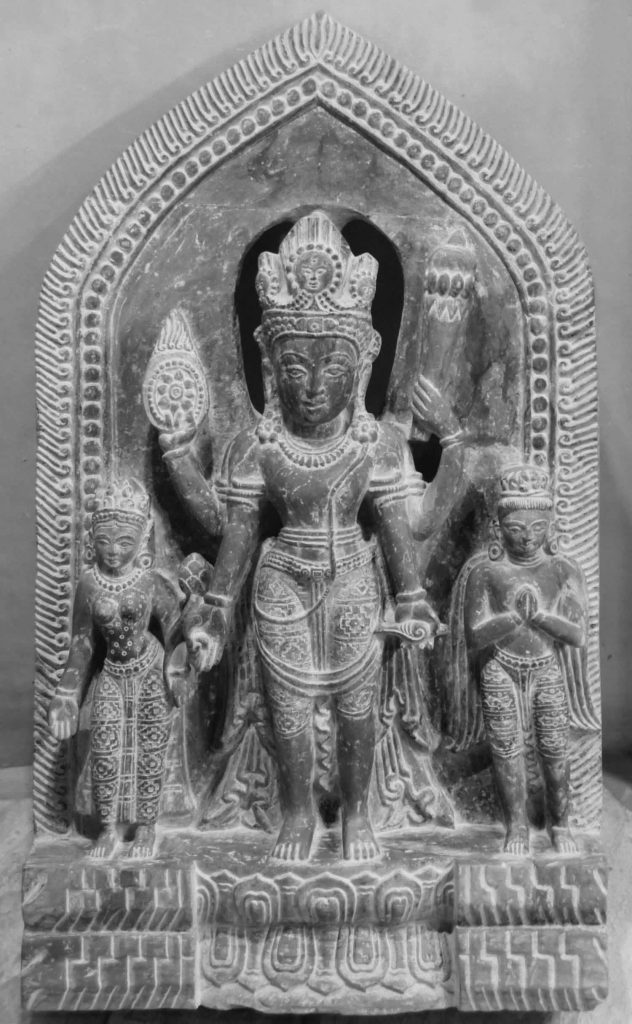
The statue of Vishnu with Laxmi and Garuda of the 10th century was stolen in 1983 from Bhaktapur.
“The former US Ambassador to Nepal Randy Berry was very supportive in helping us bring back the statues,” Puri says. “I hope the newly appointed ambassador will continue to show us the similar level of support.”
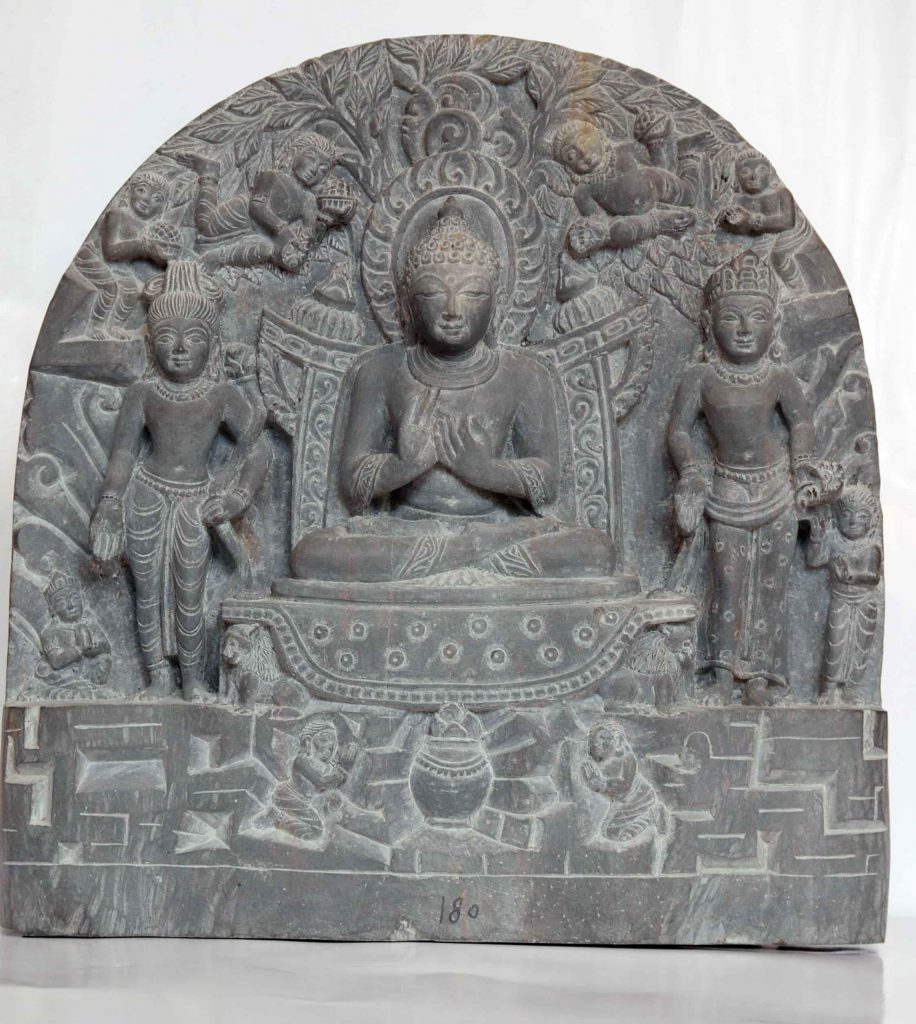
The statue of Uma-Mahesvara of the 8th century was stolen in 1983 from Pashupatinath Temple.
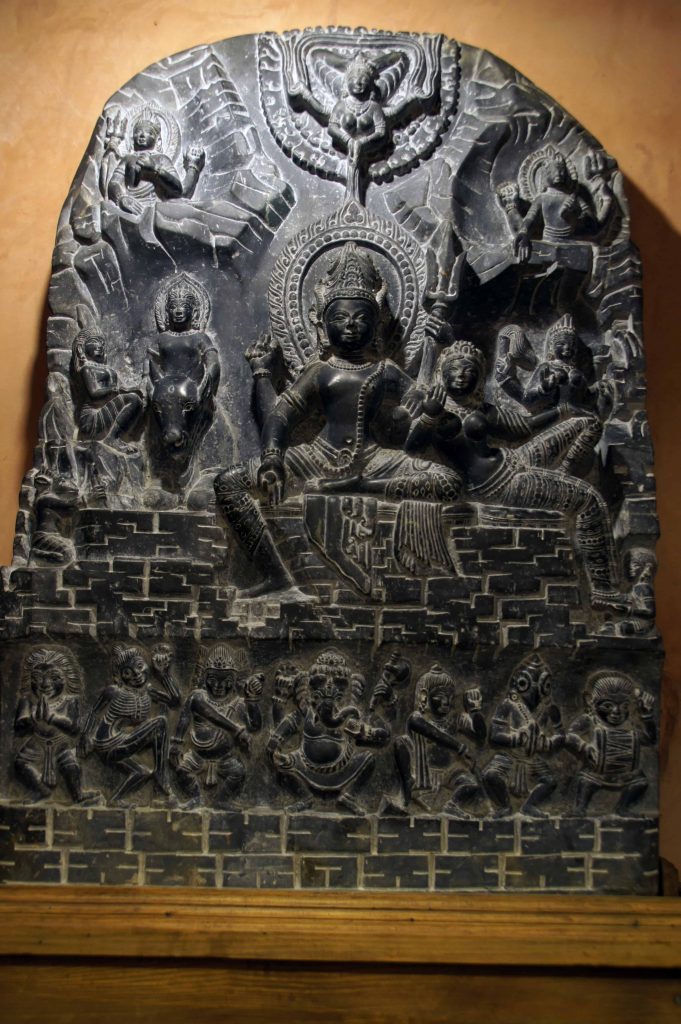
The statue of Buddha Flanked by Bodhisattvas of the 9th century was stolen in late 1970 from Alkohiti, Patan.
Clint Folsom: We should expand sister-city relationship
Clint Folsom is the mayor of the Town of Superior in Colorado State of the United States. He was elected in November 2014 and re-elected in November 2018. In addition to serving as mayor, Clint is also the managing broker and owner of Folsom & Company Real Estate. He was recently in Nepal when Pratik Ghimire of ApEx caught up with him to talk about his time here.
What was your motive to visit Nepal?
I was especially here to visit Khadbari Municipality of Sankhuwasabha district as the Town of Superior and Khadbari had agreed to a sister-city relationship last year. With this, we will exchange many cultural and developmental activities between these cities. My town also hosted the delegation of Khadbari recently and hence I and my team are here.
What did you learn from the visit?
We learned so much, from how the people live, what they do for a living and how to host the guests. They welcomed us beautifully with tika and flower garlands. I have never seen such a warm welcoming ritual. In the US, we don’t do that, as it is not part of our culture. I guess we too have to celebrate our visitors a little bit more in America.
Could we see more of such sister-city collaborations?
Yes, there are possibilities. The other cities in America could enter into such agreements. As long as there are people in each community to form such an alliance, it could easily happen as a sister-city relationship is a relation between people to people, residence to residence, and the government to government.
What difference do you see between the local governments of Nepal and America?
The most interesting difference was the mayor and the deputy here have their offices, assistants, drivers, and other facilities. It is a full-time job. But in the US, in most small and medium communities, there are no such facilities for the mayors. It is a voluntary job and you have to engage in other professional occupations for a living. When they visited us, one of the places I took them was in our board meeting room where we sit and there are sittings for the public too. The public can listen to our discussion and suggest to us what we should do. But in Nepal, the meeting was held in private. I was really happy to see that the Khadbari Municipality adopted that idea here and, during my visit, they showed it to me at first. It may look like a small thing but there must be the participation of the public in the functioning of local government because we exist for the people.
Are there any suggestions for Nepali mayors?
I suggest they be transparent and listen to people. The people should feel that they are being heard by their representatives. Sometimes, not every idea could be implemented but you should convince the people.
A look at World Cup venues (Photo Feature)
The 2022 FIFA World Cup is under way in Qatar. After the oil-rich Middle East country won the bid in 2010 to host the tournament in quite a controversial manner, it poured in billions of dollars to build the infrastructure to stage the games. Eight venues were built or renovated in 12 years with oil money and the sweat, blood, and life of thousands of migrant workers, including from Nepal. Despite the controversies, many have described these stadiums as architectural and technological masterpieces.
Here is a look at them:
Al Bayt Stadium 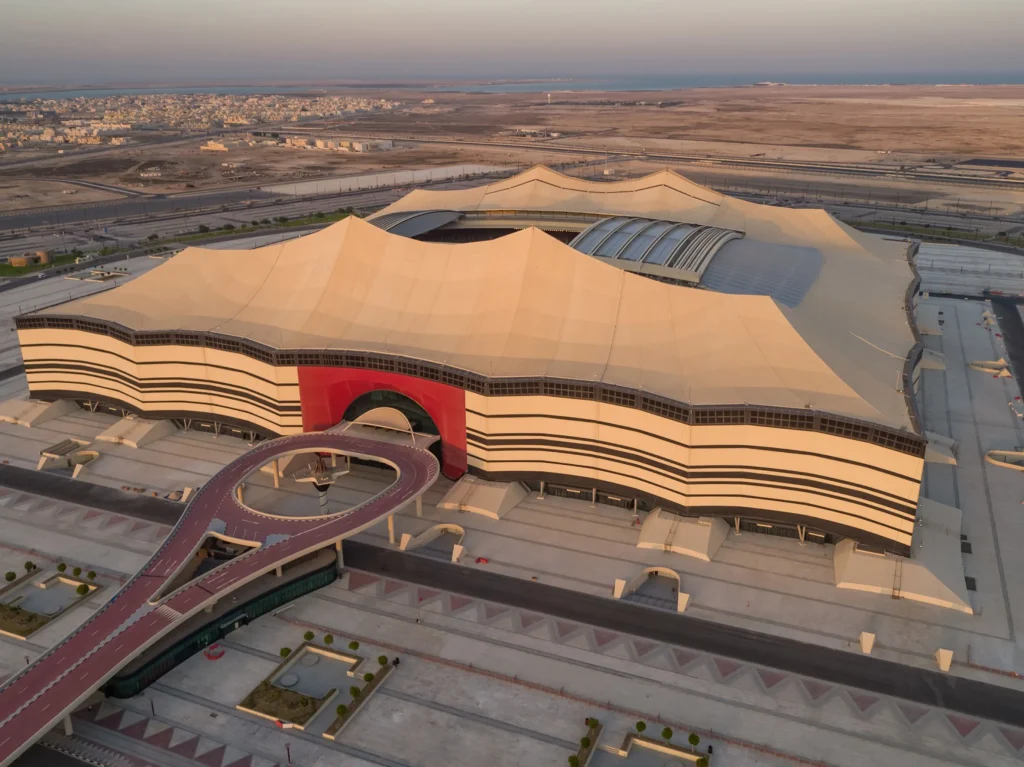 Al Bayt Stadium, with a capacity of 60,000 seats, hosted the opening fixture and will also host another eight matches. Of these, five are group meetings and three are knockout matches. In addition to having play areas and exercise stations, Al Bayt Park also has running, cycling, horseback riding, and camel riding courses. After the tournament is over, the modular upper tier will be taken down, and the seats will be used to build sports facilities in Qatar and abroad. The stadium received a five-star rating from the Global Sustainability Assessment System (GSAS) for its design and construction.
Al Bayt Stadium, with a capacity of 60,000 seats, hosted the opening fixture and will also host another eight matches. Of these, five are group meetings and three are knockout matches. In addition to having play areas and exercise stations, Al Bayt Park also has running, cycling, horseback riding, and camel riding courses. After the tournament is over, the modular upper tier will be taken down, and the seats will be used to build sports facilities in Qatar and abroad. The stadium received a five-star rating from the Global Sustainability Assessment System (GSAS) for its design and construction.
Khalifa International Stadium 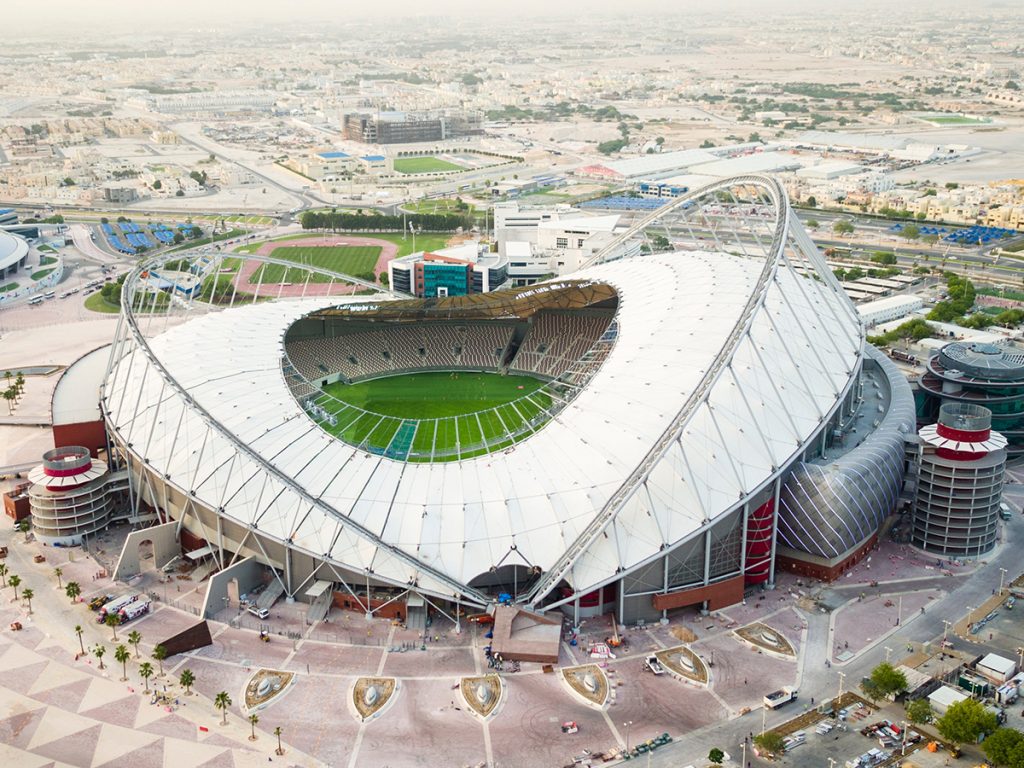 Khalifa International Stadium, which was constructed in 1976, has previously served as the venue for the Asian Games, Arabian Gulf Cup, and AFC Asian Cup. The IAAF World Athletics Championships and matches from the FIFA Club World Cup Qatar were also held here in 2019. To get it ready for the World Cup, the stadium underwent a significant reconstruction. With a capacity of 45,000, the stadium will host six group-stage games, one round-of-16 game, and the third-place play-off. It was the first World Cup venue in Qatar to achieve GSAS certification.
Khalifa International Stadium, which was constructed in 1976, has previously served as the venue for the Asian Games, Arabian Gulf Cup, and AFC Asian Cup. The IAAF World Athletics Championships and matches from the FIFA Club World Cup Qatar were also held here in 2019. To get it ready for the World Cup, the stadium underwent a significant reconstruction. With a capacity of 45,000, the stadium will host six group-stage games, one round-of-16 game, and the third-place play-off. It was the first World Cup venue in Qatar to achieve GSAS certification.
Al Thumama Stadium 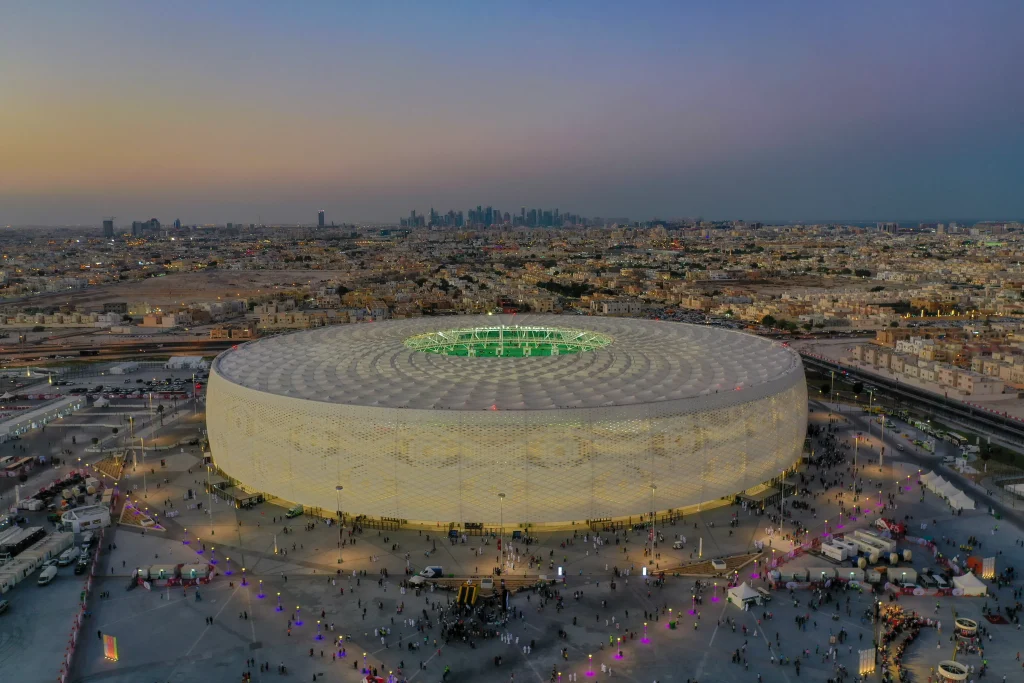 One of the quarterfinals of the World Cup, one round-of-16 match, and six group-stage games will all be played at Al Thumama Stadium. The layout of the stadium is modeled after the Middle Eastern men’s traditional woven headgear known as the ‘gahfiya’. After the World Cup, the current capacity of 40,000 will be lowered to accommodate local demands and give other developing countries with top-notch athletic infrastructure. Football games and other sporting events will be held in the arena’s remaining 20,000 spectators. On-site developments include a boutique hotel that will take the place of the stadium’s upper stands and a branch of a sports clinic.
One of the quarterfinals of the World Cup, one round-of-16 match, and six group-stage games will all be played at Al Thumama Stadium. The layout of the stadium is modeled after the Middle Eastern men’s traditional woven headgear known as the ‘gahfiya’. After the World Cup, the current capacity of 40,000 will be lowered to accommodate local demands and give other developing countries with top-notch athletic infrastructure. Football games and other sporting events will be held in the arena’s remaining 20,000 spectators. On-site developments include a boutique hotel that will take the place of the stadium’s upper stands and a branch of a sports clinic.
Stadium 974 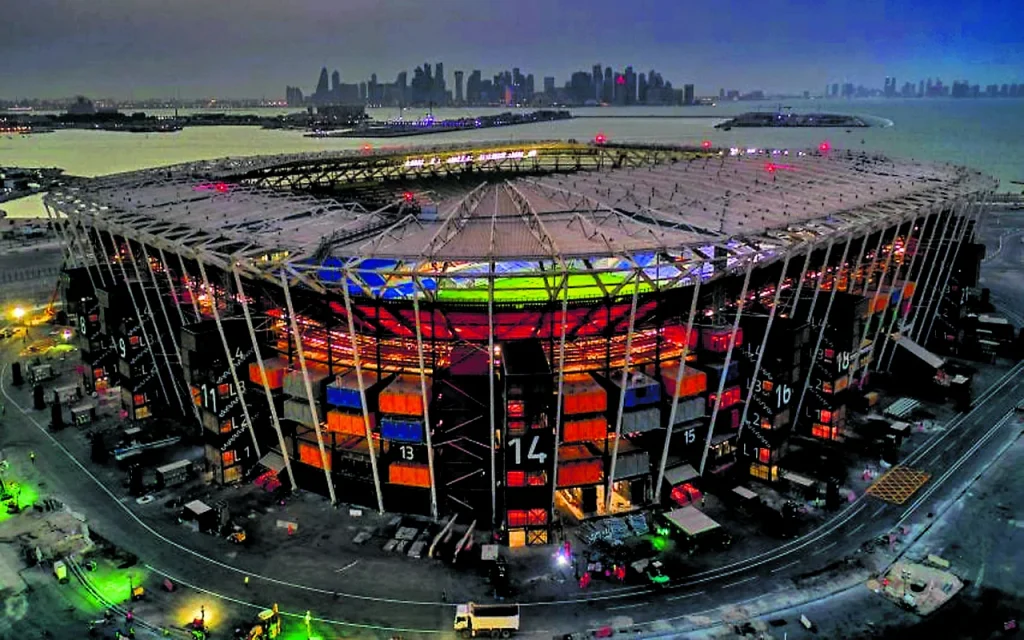 Stadium 974 is built from 974 standard-certified shipping containers and modular steel pieces, evoking the local port and the area's industrial past. It is the only waterfront venue with a breathtaking perspective of the Doha cityscape. The first-ever FIFA compliant stadium that can be fully dismantled and re-purposed post-event includes flexibility in the design to rebuild the stadium with the same capacity in a different location or build multiple smaller venues using the same materials. The GSAS gave it a five-star rating for both the design and the construction. The end product is an arena that is unique, brightly colored, and utterly contemporary. Because of its modular construction, less typical building material was needed than in the construction of a standard stadium, which helped keep construction costs low. Stadium 974 has a capacity of 40,000 and will host seven matches during the world cup, with six group games and one round-of-16 knockout match.
Stadium 974 is built from 974 standard-certified shipping containers and modular steel pieces, evoking the local port and the area's industrial past. It is the only waterfront venue with a breathtaking perspective of the Doha cityscape. The first-ever FIFA compliant stadium that can be fully dismantled and re-purposed post-event includes flexibility in the design to rebuild the stadium with the same capacity in a different location or build multiple smaller venues using the same materials. The GSAS gave it a five-star rating for both the design and the construction. The end product is an arena that is unique, brightly colored, and utterly contemporary. Because of its modular construction, less typical building material was needed than in the construction of a standard stadium, which helped keep construction costs low. Stadium 974 has a capacity of 40,000 and will host seven matches during the world cup, with six group games and one round-of-16 knockout match.
Ahmad bin Ali Stadium 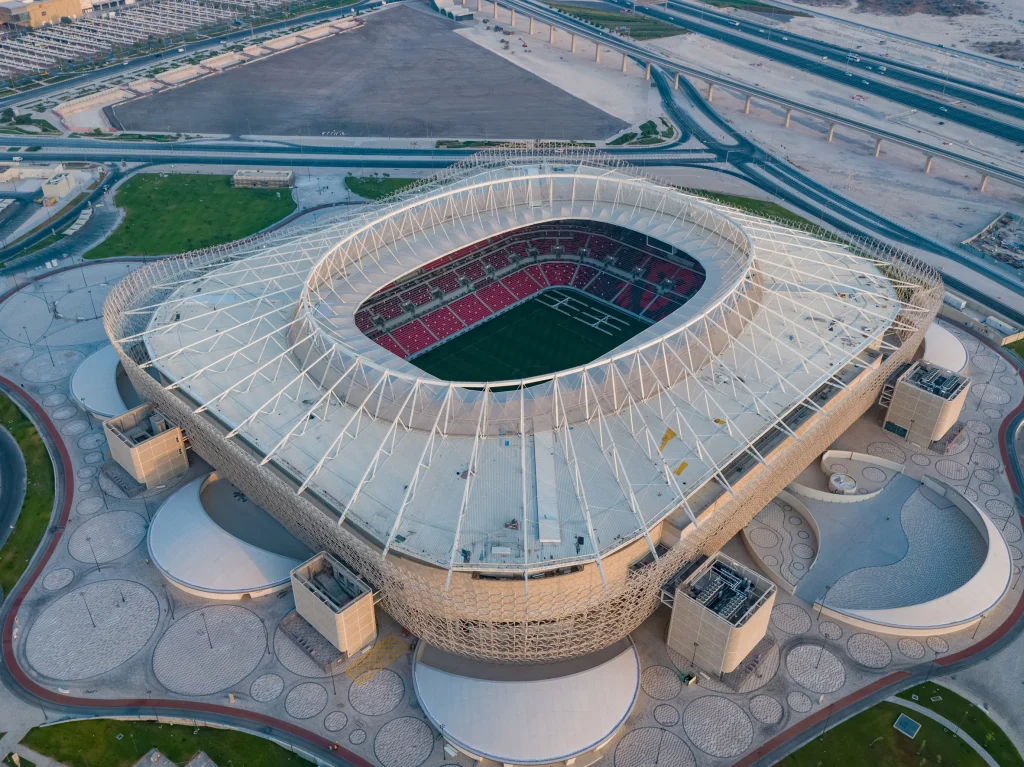 The fifth shape, a shield, unites them all and symbolizes the unity and strength that are especially important to the city of Al Rayyan. The stadium, which has a 40,000-person tournament capacity, will host six group-stage games and one round-of-16 game. After the competition, the movable upper tier will be taken down, and the seats will be used to build other sports venues in Qatar and abroad. Numerous components of the demolished building that formerly stood in this location have been utilized in the new construction, some of which have been transformed into works of public art. The majority of the building materials—more than 90 percent—have been recycled or reused. To reduce harm to the environment, trees that originally encircled the old arena have been saved for future replanting.
The fifth shape, a shield, unites them all and symbolizes the unity and strength that are especially important to the city of Al Rayyan. The stadium, which has a 40,000-person tournament capacity, will host six group-stage games and one round-of-16 game. After the competition, the movable upper tier will be taken down, and the seats will be used to build other sports venues in Qatar and abroad. Numerous components of the demolished building that formerly stood in this location have been utilized in the new construction, some of which have been transformed into works of public art. The majority of the building materials—more than 90 percent—have been recycled or reused. To reduce harm to the environment, trees that originally encircled the old arena have been saved for future replanting.
Lusail Stadium 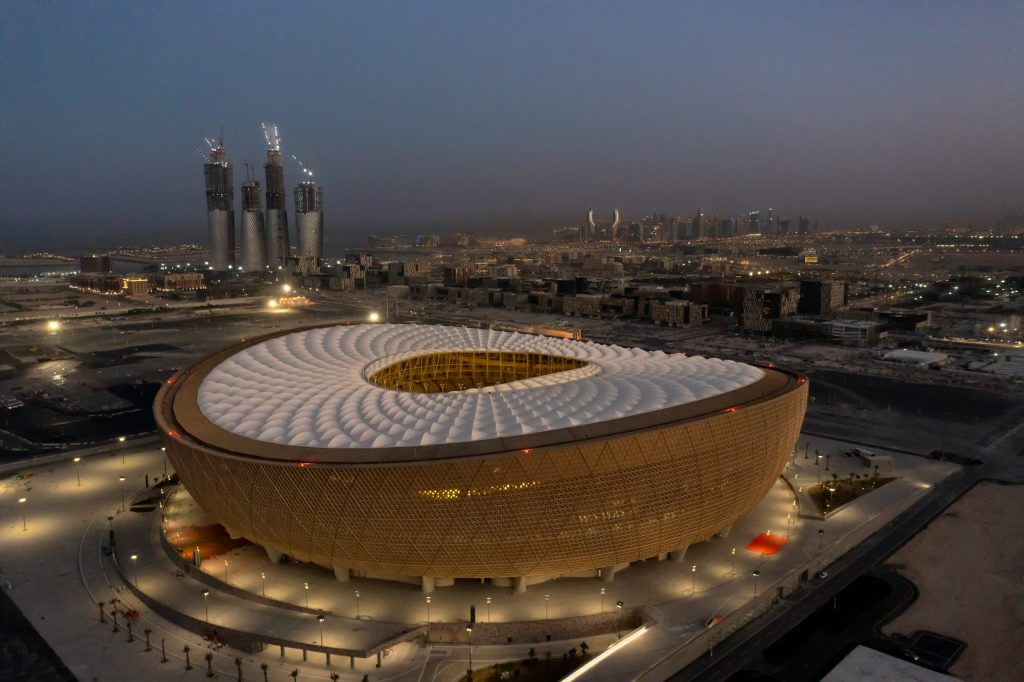 The largest stadium in Qatar, with 80,000 seats, is Lusail. Along with the World Cup final, it will hold six group-stage games and one from each round. The current plan for Lusail Stadium is to study the modification of the venue’s interior space to house a mixture of civic facilities. After the World Cup, the venue could feature affordable housing units, shops, food outlets, health clinics, and even a school. A community football field might be constructed on the higher deck and used as an outdoor terrace for new residences. Some of the tournament installations will need to be taken down to make room for these new amenities. Any materials removed will be saved, reused whenever possible, and donated to areas in need of sporting facilities. Polytetrafluoroethylene (PTFE), a cutting-edge polymer, shields the stadium from heated winds, prevents dust from entering, lets in enough light for the pitch to flourish, and provides shade to lessen the demand for air conditioners. The GSAS awarded the stadium a five-star rating.
The largest stadium in Qatar, with 80,000 seats, is Lusail. Along with the World Cup final, it will hold six group-stage games and one from each round. The current plan for Lusail Stadium is to study the modification of the venue’s interior space to house a mixture of civic facilities. After the World Cup, the venue could feature affordable housing units, shops, food outlets, health clinics, and even a school. A community football field might be constructed on the higher deck and used as an outdoor terrace for new residences. Some of the tournament installations will need to be taken down to make room for these new amenities. Any materials removed will be saved, reused whenever possible, and donated to areas in need of sporting facilities. Polytetrafluoroethylene (PTFE), a cutting-edge polymer, shields the stadium from heated winds, prevents dust from entering, lets in enough light for the pitch to flourish, and provides shade to lessen the demand for air conditioners. The GSAS awarded the stadium a five-star rating.
Education City Stadium 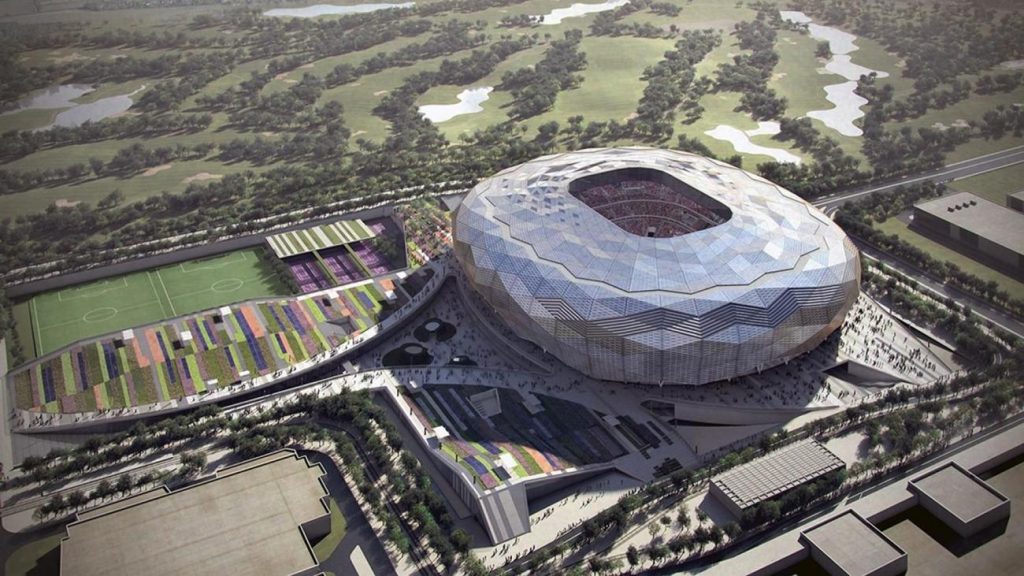 The front side of the Educational City Stadium features triangles that form complex, diamond-like geometrical patterns which appear to change color with the sun’s movement across the sky. With a capacity of 45,000, it will host eight games during the competition, including two knockout games and six group games. The stadium’s movable upper tier will be taken down, and the seats will be donated to a nation lacking in sporting facilities. The stadium, which has cutting-edge cooling equipment for the benefit of spectators, players, and officials, is the first World Cup venue to receive a five-star design and build rating from the GSAS.
The front side of the Educational City Stadium features triangles that form complex, diamond-like geometrical patterns which appear to change color with the sun’s movement across the sky. With a capacity of 45,000, it will host eight games during the competition, including two knockout games and six group games. The stadium’s movable upper tier will be taken down, and the seats will be donated to a nation lacking in sporting facilities. The stadium, which has cutting-edge cooling equipment for the benefit of spectators, players, and officials, is the first World Cup venue to receive a five-star design and build rating from the GSAS.
Al Janoub Stadium 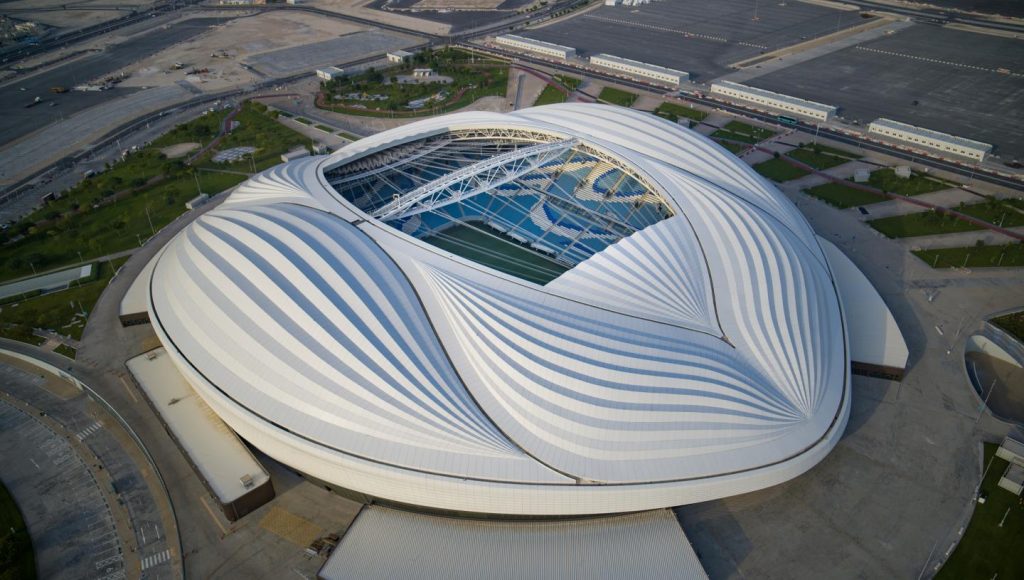 The sails of conventional dhow boats served as inspiration for the design. It has playgrounds for kids, running and cycling trails, and other open spaces. After the World Cup, the stadium’s capacity will be reduced from 40,000 to 20,000 and it will be donated to football development projects abroad. The stadium is scheduled to host six group-stage matches and one round-of-16 match.
The sails of conventional dhow boats served as inspiration for the design. It has playgrounds for kids, running and cycling trails, and other open spaces. After the World Cup, the stadium’s capacity will be reduced from 40,000 to 20,000 and it will be donated to football development projects abroad. The stadium is scheduled to host six group-stage matches and one round-of-16 match.
The text is prepared on the basis of information available on FIFA’s website
Problems of Nepali traders in international market
For over two decades, Nepali handicraft businesspersons have been participating in international handicraft fairs. They have been doing decent business, say the organizers. The stats also prove that. Nepali traders started to take part in the Artigiano Fair of Italy from 2002. They participated in the fair with five stalls in the first year and over the years, Nepalis has had huge involvement.
Nowadays, there are over 100 stalls of Nepali handicrafts. Due to the unique make and reflection of Nepali culture, Nepali handicrafts have been the first choice for the international buyers, says Keshav Jung Thapa of Krish Enterprises. “International fairs play a very significant role in advancing the sales of handicraft items.” Despite the contribution of these traders, they face a few problems which are hampering their business.
According to the Nepal Rastra Bank (NRB), a person can exchange $500 for foreign travel. For that too, s/he has to show a valid passport with a visa. But for international fairs, NRB allows any company any amount as per their demand. However, the company needs to submit the required documents and invoice. Thapa says the central bank has issued a directive that there will be no Tax Deduction at Source (TDS) for sending the money to international organizers.
However, few banks are unaware of this and they ask for 15 percent TDS. “I don’t know if the central bank sends different circulars to different banks or why is this a problem?” says Thapa. Bashudev Bhattarai, director of Foreign Exchange Management Department of the central bank agrees that the NRB circular doesn’t ask for TDS.
“I have noted this issue and asked the department to ensure that all banks follow the circular,” he adds. Also, the cargo companies have been bearing loss when sending handicrafts abroad. Janak Pyakurel of Speedmark Cargo Pvt Ltd, says only a couple of airlines carry huge cargo. “To manage all these logistics, we have to make a special request for which they charge extra fees.”
Similarly, Nepali traders have to pay 21 percent Value Added Tax (VAT) to export goods. Pyakurel says Nepali companies, for instance, can’t register themselves in Italy. “If the fair organizers offer some subsidies, it will help us.”
According to the former President of Federation of Nepalis Chamber of Commerce and Industry (FNCCI) Bhawani Rana, the demand for handicraft items is very high in international markets. “If only investments could be increased, Nepali traders can export more items to earn foreign currency.” The government should encourage and help traders participate in these events, she says.
Who will be Nepal’s next prime minister?
The Nepali Congress and the CPN-UML appear to be heading towards a right-wing race to emerge as the first and the second largest party in the federal parliament (not necessarily in that order). Numbers streaming in from more than 140 constituencies point at such a scenario as the counting of votes after Nov 20 elections reach its midway.
The sideshow of this race is no less interesting, with the CPN (Maoist Centre), Rastriya Swatantra Party (RSP), and the CPN (Unified Socialist) competing to become the third, fourth, and fifth largest parties. As of Nov 22 evening, NC has won two seats under the First-Past-the-Post (FPTP) system and is leading in 50 seats, whereas UML has bagged two seats and is leading in 40 seats.
Trailing well behind, the Maoist party is leading in 15 constituencies, while the CPN (Unified Socialist) is leading in eight constituencies. Under Proportional Representation (PR), UML is in the first position, NC second, RSP third, whereas the Maoist is in a distant fourth position. In the Kathmandu valley, RSP is receiving more votes than major parties under PR, giving the latter more than what they had perhaps bargained for.
The new federal parliament will see new parties such as RSP, CK Raut-led Janamat Party, and Nagarik Unmukti Party led by Resham Chaudhary’s spouse Ranjita Shrestha. Nagarik Unmukti Party candidate Ganga Ram Chaudhary has won in Kailali-3, whereas Shrestha is leading in Kailali-1 and is expected to win. Resham Chaudhary is in jail in connection with the 2015 Tikapur incident in which nine people were killed in a violent clash.
This time, the royalist Rastriya Prajatantra Party (RPP) is likely to increase its strength in the parliament. The new party in the parliament means voices opposing the constitution will get louder in the coming days. But RPP is not the only political force that will make its presence felt in the parliament. RSP also has reservations about the current structures of the federal government and it made its reservations quite public by not fielding candidates for the provincial assembly. The RPP wants to scrap secularism and federal structures.
The Nagarik Unmukti Party and Raut’s party have their own positions on the constitution. So, it will be tough for the major political parties to manage those voices within the framework of the constitution.
If the preliminary count is anything to go by, the Maoist party is unlikely to perform well. Before the elections, the party had hoped to secure 50 seats combined in FPTP and PR, but preliminary counting does not indicate so. Top party candidates Pampha Bhushal (Lalitpur-3), Onsari Gharti Magar (Kathmandu-2), and Dev Gurung (Lamjung-1) are lagging behind in vote counts.
Maoist candidates from mid-western districts and Madhes are faring well in preliminary counting. It is almost certain that the Maoist's chair Pushpa Kamal Dahal will emerge victorious in the elections. If the Maoist party fails to win 40-50 seats, thereby emerging as a king-maker in power-sharing, a new scenario may emerge, which will affect government formation. The election result is likely to cause animosity between the NC and the Maoist party, with preliminary results showing that NC cadres did not vote for Maoist candidates in several constituencies.
And if the CPN (US) also does not fare well in the elections, the ruling coalition will find it harder to secure majority seats in the parliament. If the Maoist party's strength decreases, it may lose its bargaining power. In such a scenario, the chances of the NC and the UML coming together for government formation cannot be ruled out.
Just before the election, in an interview, UML chair KP Sharma Oli had hinted at this possibility. The chances of Oli becoming prime minister cannot be ruled out.
If the current coalition remains intact even after the election, Dahal is likely to become prime minister. Preliminary counting is indicating a more impractical and complex power-sharing deal. The incumbent, Sher Bahadur Deuba, would want to be re-elected prime minister on the ground that the NC became the largest party under his leadership (if this indeed happens). But Deuba is not the only candidate in the fray: Youth leader Gagan Kumar Thapa has made it clear that he will contest the race to become NC’s parliamentary party leader and then the PM.


